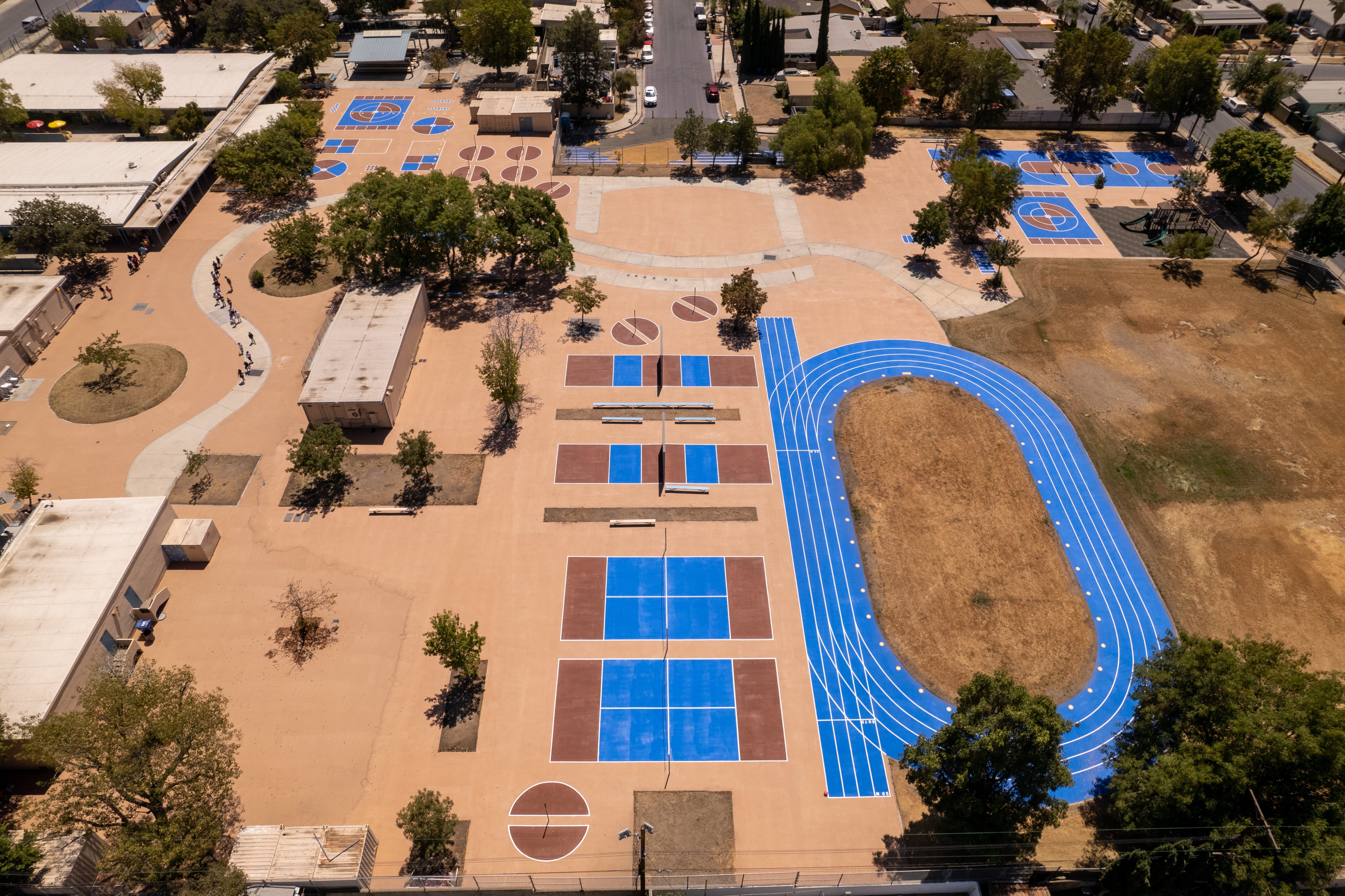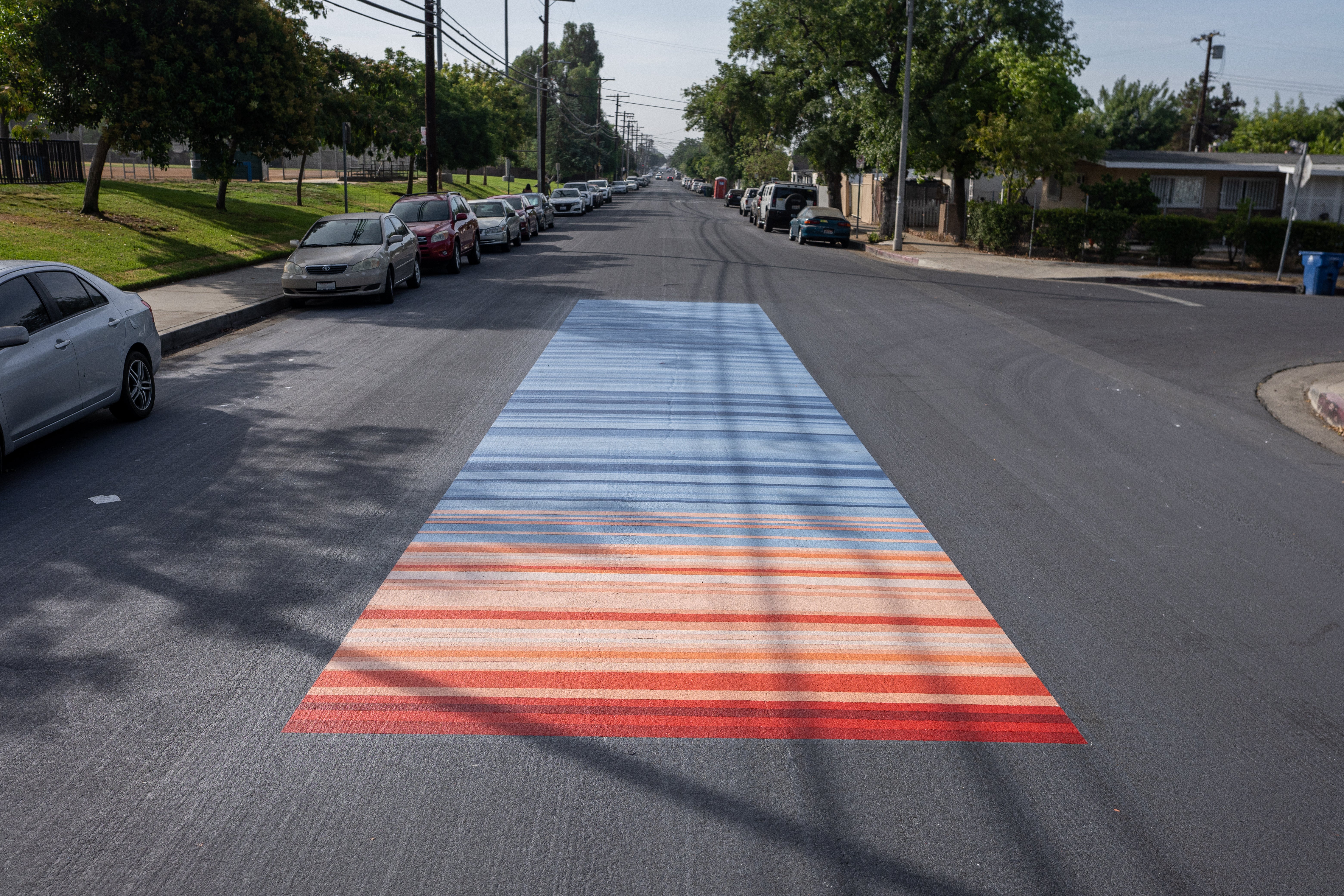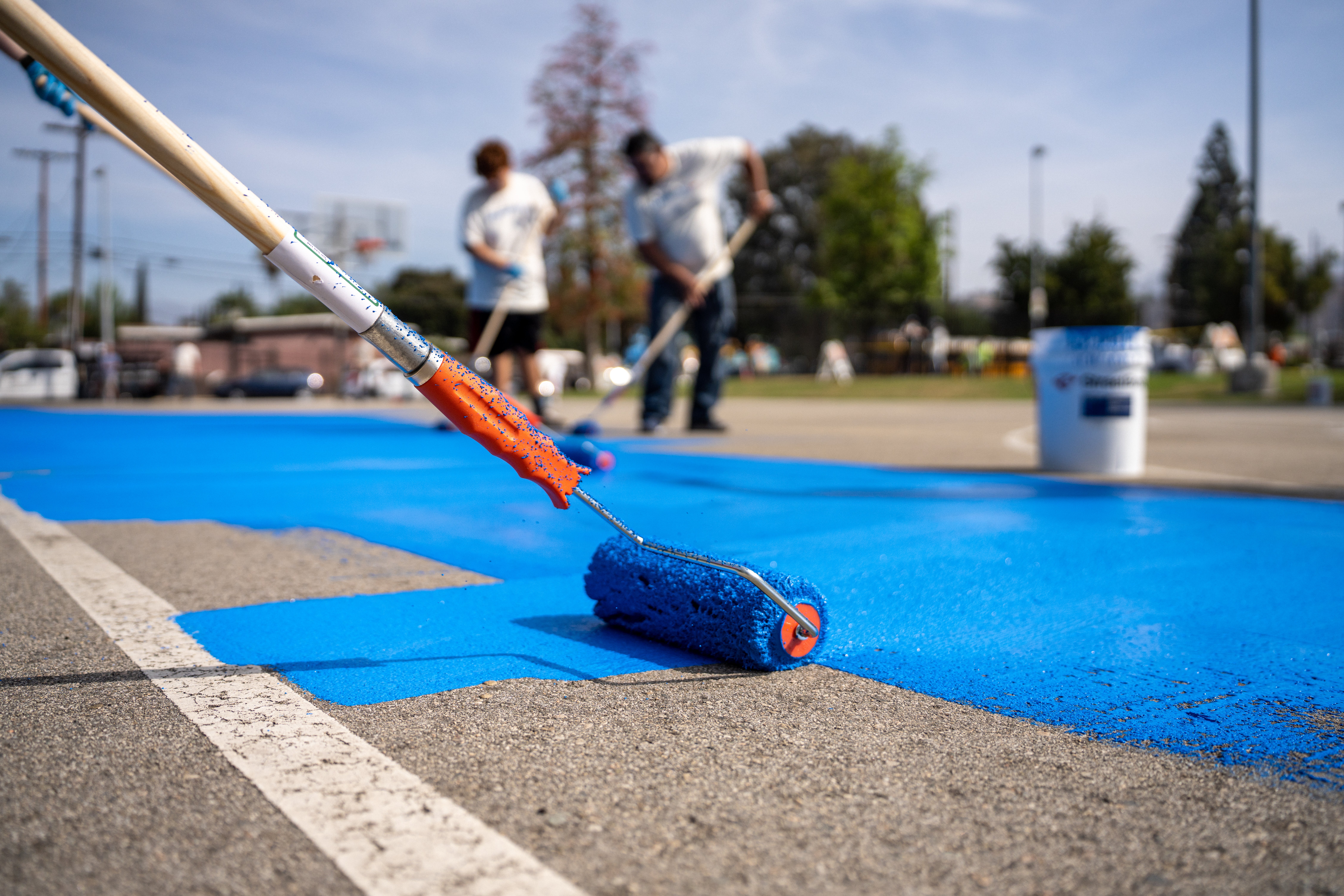LA neighbourhood to coat 1m square feet in ‘cool’ paints to beat extreme heat
Pacoima, a community in the San Fernando Valley, is covering its roads, playgrounds and basketball courts
Your support helps us to tell the story
From reproductive rights to climate change to Big Tech, The Independent is on the ground when the story is developing. Whether it's investigating the financials of Elon Musk's pro-Trump PAC or producing our latest documentary, 'The A Word', which shines a light on the American women fighting for reproductive rights, we know how important it is to parse out the facts from the messaging.
At such a critical moment in US history, we need reporters on the ground. Your donation allows us to keep sending journalists to speak to both sides of the story.
The Independent is trusted by Americans across the entire political spectrum. And unlike many other quality news outlets, we choose not to lock Americans out of our reporting and analysis with paywalls. We believe quality journalism should be available to everyone, paid for by those who can afford it.
Your support makes all the difference.When a heatwave hits, temperatures in cities can become even more extreme as all that concrete and asphalt absorbs a ton of sunlight.
One Los Angeles neighbourhood is testing out a new strategy to keep itself cool from this phenomenon, called the “urban heat island” effect.
Pacoima, a community in the San Fernando Valley, is painting one million square feet of roads, playgrounds and basketball courts with a reflective paint. The paint doesn’t absorb as much heat as uncoated surfaces would, and project organizers hope that the effects can spread to cool down the whole neighbourhood.
On hot summer days, cities can get up to seven degrees Fahrenheit hotter than their surrounding areas, according to the US Environmental Protection Agency (EPA).
Even at night, long after the sun has set, cities can still be up to 5F hotter as absorbed heat radiates back out from roads, buildings and sidewalks, the agency adds.
The paint being used in Pacoima can reflect both visible light and infrared light - meaning heat, according to Fast Company.
Streets in the neighbourhood have been coated in a light-grey paint to bounce sunlight from the dark asphalt which can be a significant source of heat since darker colours absorb more heat than light ones.
The paint also comes in more colourful hues, and areas around a local park have been decked out in blue, white, yellow and brown. Different colours were used to delineate sections of basketball and tennis courts, as well as track and hopscotch courts.

One road has a mural with a yellow sun hiding behind some blue mountains, flanked by birds and flowers.
Another section of street was painted with “climate warming stripes” — an array of red and blue hues that symbolize how the area’s average temperature has risen over the years.
GAF, a roofing company that manufactures the paint and is funding the project, says it will measure the impact of the coating on local temperatures over the next couple of years.
Some initial measurements have shown promise. Bloomberg reports that an area of coated pavement was about 10F cooler than non-coated asphalt nearby, during one measurement in the neighbourhood.
That could make a significant difference. Standard pavement can reach up to 150F (67C) on a hot day, according to the EPA, meaning lots of extra heat seeping into the community.

And all that heat can be detrimental. Extremely hot days can be dangerous, especially for the elderly, small children and those with pre-existing health conditions.
Illnesses, like heat exhaustion or heat stroke, can onset quickly and be fatal. Extreme heat was the deadliest form of disaster in the US last year, according to the National Weather Service.
Hot neighbourhoods can also raise energy costs as people crank up air conditioners to stay safe. And when it rains, hot pavements heats up stormwater runoff — which can hurt animals in surrounding rivers, lakes and streams, the EPA says.
Other cities are also trialling the so-called “cool” pavements. In Phoenix, Arizona, some treated roads were up to 12F cooler than non-treated roads, according to recent city data. Even at night, air over the roads was about half a degree cooler.
Reflective paint can also be used to reduce heat in buildings. Many buildings in New York City, for example, have covered their roofs in reflective paint.
The urban heat island effect often disproportionately impacts communities of colour and low-income. In part, that’s because these neighbourhoods often have less tree cover or other greenery than wealthier neighbourhoods, keeping temperatures hotter.

One study last year found that across the US, poorer communities and neighbourhoods with more people of colour were hotter than richer and whiter areas in the same county.
The effects of extreme heat — and the consequences of these disparities — will likely intensify in the coming decades. According to the United Nations, heatwaves are becoming hotter and more common as the planet’s average temperature rises.
This summer, a series of devastating heatwaves have impacted tens of millions of Americans with temperatures soaring above 100F (38C) in some places.
Texas, which experienced its hottest July on record, saw temperatures above 100F (38C) for weeks on end. This July was the third-warmest July on record for the lower 48 US states.




Join our commenting forum
Join thought-provoking conversations, follow other Independent readers and see their replies
Comments